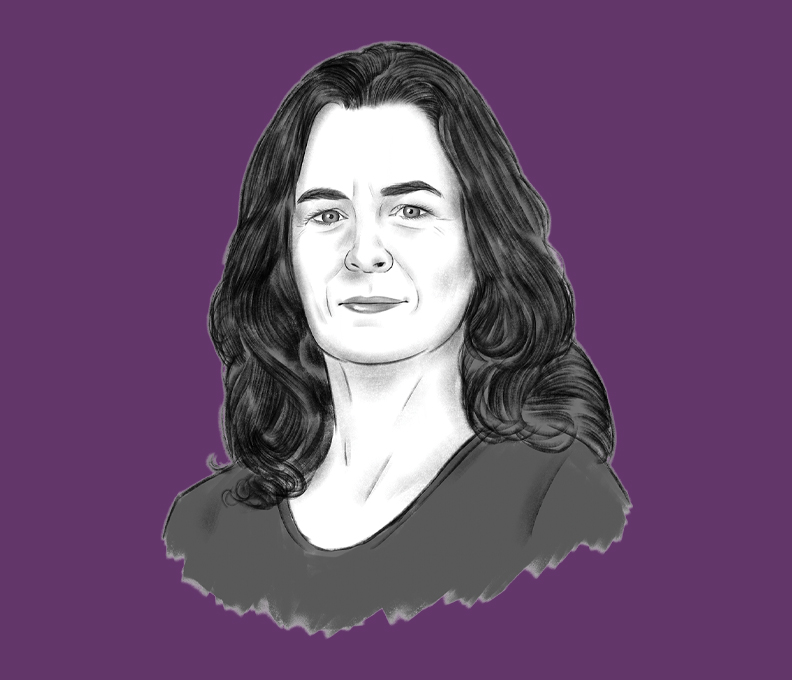How Reading Faces Can Boost Your Business
Why microexpressions reveal what people are thinking
May 7, 2024

Annie Särnblad / Illustration: Joel Kimmel
“Mom! Emma is looking at me with contempt and disgust!”
I leaned forward to look at my daughter Emma’s face, and indeed she was showing contempt and disgust. She had the telltale lip tucked into one cheek, her upper lip was lifted, and she had deep nostril shadows along both sides of her nose. It was the same expression I’d seen earlier that week on the face of a board member who disagreed with the direction their tech CEO wanted to move the company.
“Good coding, Matthias!” I said to my son with a nod. I was pleased. My children’s training in reading the fleeting emotions on people’s faces was going well.
The teaching methods I use for my children and clients are the same. I’ve taught facial expressions to more than 5,000 CEOs and MDs across the globe. I train most of my clients to read facial expressions specifically for high-level negotiations, mergers and acquisitions (M&A), sales and better business relationships. Many of them also find that the ability to see what someone is feeling improves their relationships with friends and family.
Microexpressions are the subconscious “leakage” of emotions that make our unspoken feelings visible. They precede the thought process and are universal to our species regardless of culture, language, ethnicity, age or geography. Each emotion creates a specific change in blood flow and muscle movement in our bodies and on our faces. We sweat when we are nervous, cry when we are sad, and wrinkle our noses and deepen the shadow lines next to our nostrils when we find something distasteful.
The traditional way of reading microexpressions is to use the Facial Action Coding System (FACS) developed by Paul Ekman, Wallace V. Friesen and Joseph C. Hager. This level of coding takes into account all the facial muscle movements in an expression using a system of action units.
I spent 25 years of my life studying eight languages in as many countries, and I have training in teaching, linguistics and anthropology. I am FACS-certified, but I am also wired to translate and simplify. To teach my children facial expressions, I created my own easy-to-understand methods that focus on the one piece of each expression that is unique to each emotion.
It turns out children aren’t the only ones with short attention spans who want learning to be quick, lasting and fun. Over time, I found these teaching methods were particularly useful to my business clients.
In an M&A meeting, for example, it’s essential to read the party you’re pitching to. Are their pupils dilating, showing extreme interest? Are the balls of their cheeks rising in pleasure? Are they showing disgust—or what I like to call the “No Face”—in displeasure? The No Face is most easily seen in the deepening of what I call the nostril shadows.
This ability to listen deeply by reading microexpressions is both instant and actionable. When we see how the other party is responding, we can change our words and the direction of a negotiation. We can pause, pivot, ask for clarity or move to close a deal.
The skill of reading facial expressions is just as applicable in our personal lives as it is in business. In a conversation with a friend or loved one, we can see instantly how our words and actions affect the other. We can use this insight to ask questions, soften our tone, or adjust our approach. In romantic relationships, reading microexpressions gives us information as to whether the other person is showing attraction or emotional attachment.
As for my children, they are now almost as adept at reading facial expressions as I am. We all feel a strong sense of responsibility for the people around us. After all, it is easier to be kind when you can see that others are struggling.
Annie Särnblad is a microexpressions expert, strategic advisor, author and anthropologist. She has taught workshops for CEOs and MDs and has spoken at the TIGER 21 Global Exchange and the world’s largest CEO conference, YPO Edge. Her books include Diary of a Human Lie Detector and The Facial Expressions Glossary. Learn about her online courses at anniesarnblad.com.



